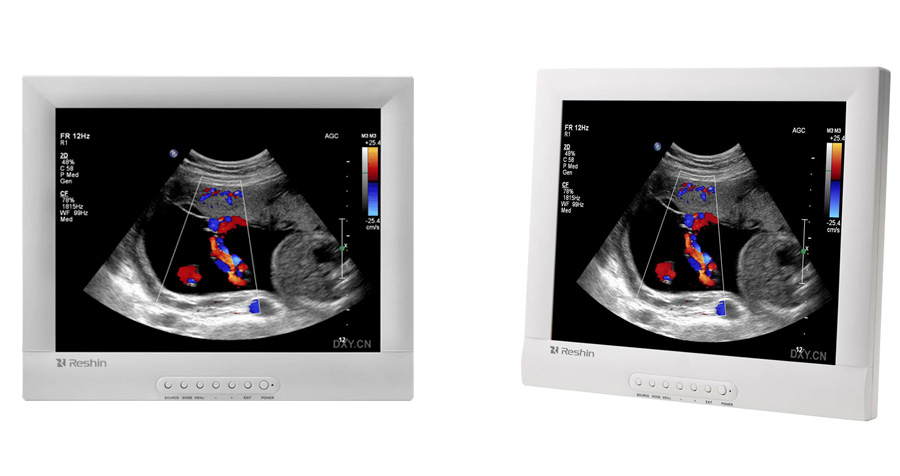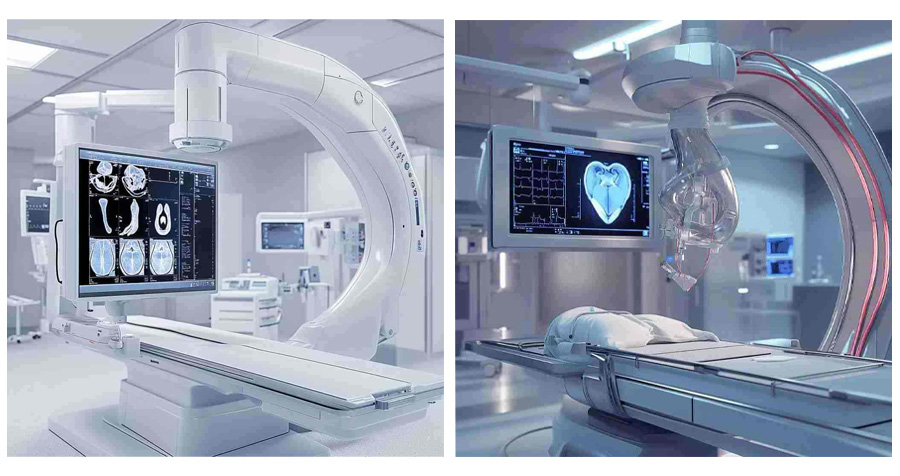Medical monitors are mainly divided into two big types: diagnostic monitors and endoscopy surgery monitors. These two types can also be split into many smaller parts.
Today, with medical technology advancing rapidly, medical monitors are no longer just simple tools for showing images. They have become the "third eye" for doctors. With so many types of medical monitors out there, do you feel overwhelmed? Don’t worry. This article will guide you through the different kinds of medical monitors and where they are used, helping you understand these "behind-the-scenes heroes" more clearly.
1: Diagnostic Monitors
In the field of medical imaging diagnosis, diagnostic monitors play a very important role. They are like "super eyes" for doctors to see problems in the body and make accurate diagnoses. How good these monitors are can directly affect whether the diagnosis is correct and reliable. So, what are the special features of diagnostic monitors? And where are they used?
1.1 Features of Diagnostic Monitors
Diagnostic monitors have stricter technical requirements and more professional performance compared to regular monitors. This is mainly shown in the following ways:
high resolution
They can show clear and detailed medical images, making even tiny problems easy to see. This gives doctors reliable information for diagnosis. Common resolutions include 2MP (1920×1200), 3MP (2048×1536), 5MP (2560×2048), and even higher.
High brightness
They can clearly show image details even in bright environments, preventing light interference from affecting the diagnosis. The brightness is usually over 500 cd/m², and can even reach up to 1000 cd/m².
High contrast
They can display a wide range of gray shades, helping doctors see small differences in tissues and organs, which improves diagnostic accuracy. The contrast ratio is usually over 1000:1.
Accurate color reproduction
They can accurately show the true colors of images, helping doctors correctly identify the shape, structure, and any issues in tissues and organs.
Comply with medical imaging standards
For example, the DICOM standard ensures that images look the same on different devices and in different hospitals. This makes it easier for doctors to do remote consultations and discuss cases.
High stability
They can run stably for long periods, preventing any interruptions in diagnosis due to equipment failure.For example:
1.2 Application scenarios of diagnostic display:
Diagnostic monitors are widely used in various departments of medical institutions, providing reliable display support for different types of medical imaging diagnostics:
Radiology Department
They are used to view images like X-rays, CT scans, and MRIs, helping doctors diagnose fractures, tumors, brain diseases, and more.
- X-rays are mainly used to diagnose fractures, pneumonia, and tuberculosis.
- CT scans are mainly used to diagnose tumors, brain bleeding, and blood vessel diseases.
- MRI, or magnetic resonance imaging, is mainly used to diagnose nervous system diseases, soft tissue injuries, and joint problems.
Ultrasound Department
They are used to show ultrasound images in real time, helping doctors observe fetal development and diagnose diseases in abdominal organs.
- Abdominal ultrasound is mainly used to diagnose diseases in organs like the liver, gallbladder, pancreas, and kidneys.
- Obstetric and gynecological ultrasound is mainly used to observe fetal development and diagnose gynecological diseases.
- Cardiac ultrasound is mainly used to diagnose abnormalities in the structure and function of the heart.

Pathology Department
They are used to view pathology slides, helping doctors diagnose diseases like cancer and inflammation. Histopathology focuses on identifying tumor types and determining if they are benign or malignant, while cytopathology is primarily used to detect cancer cells, inflammatory cells, and other cellular abnormalities. Together, these tools provide critical insights for accurate diagnosis and treatment planning.
1.3 Choose the right diagnostic display
When choosing the right diagnostic monitor, we need to consider the following factors:
- Resolution: Select the appropriate resolution based on diagnostic needs. For example, mammography requires a monitor with at least 5MP or higher resolution.
- Size: Choose the right size according to diagnostic needs and viewing distance. For instance, radiology departments usually require larger monitors.
- Brightness: Ensure the monitor’s brightness meets the requirements of the lighting environment.
- Brand and Service: Choose a reputable brand with excellent quality assurance, such as (reshin).

2:Surgical&Endoscopy Monitors
Endoscopic surgery monitors are essential equipment in endoscopic procedures. They are divided into endoscopic monitors and surgical monitors. Endoscopic monitors are mainly used for internal examinations of the human body, helping doctors make diagnoses. Examples include gastroscopes, colonoscopes, and ENT (ear, nose, and throat) scopes. On the other hand, surgical monitors are primarily used in minimally invasive surgery scenarios such as laparoscopy, thoracoscopy, and gynecological surgeries.
2.1 Features of endoscopic surgical displays
High refresh rate and low latency
Endoscopic surgery monitors need to have high refresh rates and low latency to ensure smooth and real-time display of surgical images. A high refresh rate reduces motion blur, while low latency ensures that the doctor’s actions are synchronized with the screen display, preventing any delays that could affect the precision of the surgery.
High resolution and high contrast
Endoscopic surgery monitors usually have high resolution and high contrast, allowing them to clearly show details of the surgical area. This helps doctors accurately identify tissue structures, blood vessels, and problem areas, which is crucial for precise surgical procedures.
Anti-reflection and anti-glare
Operating rooms have complex lighting, so endoscopic surgery monitors need anti-reflection and anti-glare features. This reduces interference from ambient light and ensures doctors can clearly view the surgical images under any lighting conditions.
Ergonomic Design
Endoscopic surgery monitors often come with adjustable stands that allow for multi-angle rotation and height adjustment. This makes it easy for doctors to position the screen according to surgical needs and viewing preferences, reducing eye strain during long procedures.
2.2 Application scenarios of endoscopes
Endoscopic monitors are mainly used for examining the inside of the human body, such as during colonoscopies, gastroscopies, and ENT (ear, nose, and throat) scopes. They help doctors check internal conditions, detect issues like inflammation, polyps, tumors, or foreign objects early, and can also be used for treatments like removing foreign objects, stopping bleeding, or cutting out polyps.
2.3 Application scenarios of surgical displays
Endoscopic surgery monitors are widely used in various minimally invasive surgeries, providing doctors with clear, real-time visual guidance. Here are their main applications:
Laparoscopic surgery
In laparoscopic surgeries, endoscopic monitors are used to display organs and tissues inside the abdominal cavity, helping doctors perform procedures like gallbladder removal, appendix removal, and gastrointestinal surgeries.
Thoracoscopic surgery
In thoracoscopic surgeries, endoscopic monitors are used to display organs and tissues inside the chest cavity, assisting doctors in performing lung surgeries and removing mediastinal tumors.
Arthroscopic surgery
In arthroscopic surgeries, endoscopic monitors are used to show the internal structures of joints, helping doctors repair and treat areas like the knee and shoulder joints.
Urological surgery
In urological surgeries, endoscopic monitors are used to display the internal structures of the urinary system, assisting doctors in procedures like prostate removal and kidney stone extraction.
Gynecological surgery
In gynecological surgeries, endoscopic monitors are used to display organs like the uterus and ovaries, helping doctors perform procedures such as removing uterine fibroids and ovarian cysts.
Diagnostic displays and endoscopic surgical displays are important tools in precise medical care. They play an irreplaceable role in diagnosing diseases and performing surgeries. With excellent performance and special designs, they give strong support to doctors and provide safer, more accurate treatment for patients. In the future, as technology improves, these displays will continue to help the healthcare industry grow and protect human health. Whether it’s helping doctors see problems clearly or guiding minimally invasive surgery, these displays will be a key part of the future of medical technology.

